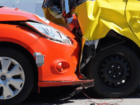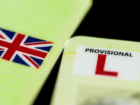In 2017 the law on child car seats was updated to reflect expert’s safety warnings over backless booster seats for children, but the changes have created some confusion over using your existing car seat and those still available to buy on the market.
Our guide explains everything you need to know about the law on children’s car seats, as well as what to look for if you decide to update yours.
So what’s the new law?
The new law states manufacturers are no longer allowed to introduce new models of backless booster seats for children shorter than 125cm (4.1ft) or weighing less than 22kg (48.5lbs) This is so the range of products available on the market are better suited for younger children.
Previously, children weighing 15kg (33lbs) or less were allowed to use backless booster seats, but experts now believe they offer less protection.
How safe are booster seats?
Booster seats are designed to give your child the additional height needed so an adult seat belt can be used to correctly restrain them, but they do not offer any additional protection.
The law changed after evidence showed that high-backed booster seats offer more protection than backless boosters. A high-back booster seat with wings is far more preferable to a regular booster seat as it provides children with head, neck and torso protection from a side-on impact.
However, backless boosters are still certified to be legal and safe to use as long as they conform to current UN ECE R44 safety standards, or to the new i-size regulation, R129.
Should I get a new car seat for my child?
The new law doesn’t affect existing models of seats or cushions and doesn’t mean that they are unsafe or illegal. It only applies to new products entering the car seat market.
If you have a booster or car seat that you are currently using it will still be approved under the 2006 law and you will still be able to use it.
Formally the ruling under this law stated that all children had to use some form of booster cushion or car seat up to the age of 12 or until they reached 135cm (4ft 5in) in height. It also recommend that booster seats were used until a child reached 4ft 11in.
It’s also worth pointing out car seats for babies should be replaced when their head is level with the top of the seat.
What are the main rules on child seats?
The two main rules remain largely unchanged;
- children must use a car seat until they are 12 years old or 135cm tall (4.5ft) – whichever comes first
- children over 12 or taller than 135cm (4.5ft) must wear a seat belt.

When it comes to car seats it’s best to choose one based on your child’s height or weight to make sure they are adequately protected in the event of a crash:
Weight
| Child’s weight | Correct car seat | |
| 0 to 10kg(22lbs) | Lie-flat or ‘lateral’ baby carrier, rear-facing baby carrier, or rear-facing baby seat using a harness | |
| 0kg to 13kg (291bs) | Rear-facing baby carrier or rear-facing baby seat using a harness | |
| 9kg to 18kg (20lbs to 40lbs) | Rear- or forward-facing baby seat using a harness or safety shield | |
| 15kg to 25kg (33kg to 55kg) | Rear- or forward-facing child car seat (high-backed booster seat or booster cushion) using a seat belt, harness or safety shield | |
| 22kg to 36kg (49lbs to 79lbs) | Rear- or forward-facing child car seat (high-backed booster seat or booster cushion) using a seat belt, harness or safety shield |
Height
Height- based seats are now known as ‘i-Size’ seats. They were introduced in 2013 to provide better protection for children and to help make installing car seats easier.
The i-Size standard doesn’t replace the current ECE R44.04 standard, it runs alongside it and will do for the foreseeable future, under EU safety standard ECE R129. So, you don’t need to replace your current car seat as long as it meets the current ECE R44.04 standard.
However, the i-Size seats undoubtedly offer better head and neck protection as well as a defence from front and side impacts.
If you decide to go for an i-Size seat you must;
- only use EU-approved height-based child car seats in the UK – these have an orange ‘approved’ label showing a capital ‘E’ in a circle and ‘R129’
- fit it using ISOFIX anchor points – these come with all i-Size seats which mean you can fit the car seat to your car safely without needing to rely on seat-belts
- keep the seat rear-facing until the child is over 15 months old – it’s been proven that rear-facing car seats are up to five times safer than forward-facing seats as they’re able to restrain the baby’s head and spread the impact
- deactivate any front airbags before fitting a rear-facing baby seat in a front seat
- not fit a child car seat in side-facing seats.
What happens if I’m caught using the wrong car seat for my child?
If you were to be stopped and your child is found to be using a backless booster seat that you owned before the law changed, you haven’t broken the law and the seat is still considered legal.
However, you could be fined up to £500 if the police find your child is not using a car seat but legally should be, or if they’re using a car seat that isn’t the correct weight or height for them. For example, if they are 13kg and using a booster seat that clearly states the minimum weight is 15kg.
Are there any circumstances when a child can travel without a car seat?
There are very few exceptions to the rule, but in certain situations a child can travel without a car seat when the appropriate restraint is not available:
Taxi’s, minibuses, coaches or vans
Children can travel in a rear seat (or any seat behind the driver). If there is no child car seat available, children over three years of age must use an adult seat belt. Children under three cannot travel without the correct car seat unless it is in a licensed taxi or minicab. In this instance, they must use a rear seat without a seat belt.
Unexpected and necessary journeys
Children aged three or over can also travel without the correct car seat, if the adult needs to take an unexpected and necessary journey that is only a short distance. In this instance, they must travel in a rear seat and use an adult seat belt.
Emergency vehicles
In emergency vehicles such as an ambulance, children may be held if the appropriate child seat or restraints are not available.
Multiple car seats
If there’s no room for a third child car seat in the back of the vehicle, then a child under three can sit in the front seat in the correct child car seat. Children aged three or older can sit in the back of the vehicle using an adult seat belt.
No available restraints
If a vehicle has no child car seat or seat belt available, then children aged three or older can travel in the back of the vehicle. Children under three cannot travel in vehicles with no restraints.
Tips for buying a new car seat
Be prepared
If you’re buying a new booster seat you may be asked for your child’s weight and height as new products are now labelled with restrictions, so remember to take some measurements before you go to the shop.
Be safe
Avoid buying second-hand from unknown sources or online marketplaces. You might save some pennies but you don’t know if the car seat has previously been in a collision which could have damaged it.
Car seats also come with expiry dates as materials like plastic can become brittle and weak over time. So, if you can’t find an expiry sticker, it’s best to avoid.
All car seats used in the UK must meet the latest European regulations. Look out for an orange label showing a capital ‘E’ in a circle- this indicates it complies with European standards and has been approved for sale and use.








